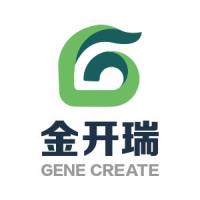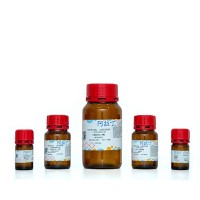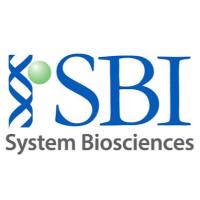Isolation of Histones and Nucleosome Cores from Mammalian Cells
互联网
- Abstract
- Table of Contents
- Materials
- Literature Cited
Abstract
In vitro analysis of DNA in chromatin is often important for understanding mechanisms of regulation of transcription and other processes that occur on DNA. The basic unit of chromatin is the nucleosome core, containing two copies each of the core histones H2A, H2B, H3, and H4 to form a histone octamer that wraps 145 base pairs of DNA in a left?handed superhelix. In vivo, chromatin is associated with linker histones (such as H1), which facilitate the ordered packing of nucleosomes. This linker histone?containing particle is properly termed the nucleosome (or chromatosome), while the linker histone?free particle is the nucleosome core. Pure polynucleosome cores and histones can be readily isolated from mammalian tissue culture cells. This unit describes procedures for isolation and purification of nuclei, isolation of polynucleosomes lacking linker histones from these nuclei, isolation of pure populations of mono? and dinucleosome cores from oligonucleosome fractions, and isolation of core histones from purified nuclei. The methods presented here do not denature the histones, and may yield histones that are more active for in vitro assemblies.
Table of Contents
- Basic Protocol 1: Preparation of a Washed Nuclear Pellet
- Basic Protocol 2: Solubilization and Purification of Histone H1–Depleted Oligonucleosomes
- Basic Protocol 3: Purification of Mono‐ and Dinucleosomes
- Basic Protocol 4: Purification of Core Histones by Hydroxylapatite Chromatography
- Reagents and Solutions
- Commentary
Materials
Basic Protocol 1: Preparation of a Washed Nuclear Pellet
Materials
Basic Protocol 2: Solubilization and Purification of Histone H1–Depleted Oligonucleosomes
Materials
Basic Protocol 3: Purification of Mono‐ and Dinucleosomes
Materials
Basic Protocol 4: Purification of Core Histones by Hydroxylapatite Chromatography
Materials
|
Figures
Videos
Literature Cited
| Literature Cited | |
| Becker, P.B., Tsukiyama, T., and Wu, C. 1994. Chromatin assembly extracts from Drosophila embryos. Methods Cell Biol. 44:207‐223. | |
| Carruthers, L.M., Tse, C., Walker, K.P. III, and Hansen, J.C. 1999. Assembly of defined nucleosomal and chromatin arrays from pure components. Methods Enzymol. 304:19‐35. | |
| Côté, J., Utley, R.T., and Workman, J.L. 1995. Basic analysis of transcription factor binding to nucleosomes. Methods Mol. Genet. 6:108‐128. | |
| Guyon, J.R., Narlikar, G.J., Sif, S., and Kingston, R.E. 1999. Stable remodeling of tailless nucleosomes by the human SWI‐SNF complex. Mol. Cell Biol. 19:2088‐2097. | |
| Hayes, J.J. and Lee, K.‐M. 1997. In vitro reconstitution and analysis of mononucleosomes containing defined DNAs and proteins. Methods 12:2‐9. | |
| Imbalzano, A.N., Schnitzler, G.R., and Kingston, R.E. 1996. Nucleosome disruption by human SWI/SNF is maintained in the absence of continued ATP hydrolysis. J. Biol. Chem. 271:20726‐20733. | |
| Ito, T., Tyler, J.K., Bulger, M., Kobayashi, R., and Kadonaga, J.T. 1996. ATP‐facilitated chromatin assembly with a nucleoplasmin‐like protein from Drosophila melanogaster. J. Biol. Chem. 271:25041‐25048. | |
| Ito, T., Bulger, M., Pazin, M.J., Kobayashi, R., and Kadonaga, J.T. 1997. ACF, an ISWI‐containing and ATP‐utilizing chromatin assembly and remodeling factor. Cell 90:145‐155. | |
| Kornberg, R.D., LaPointe, J.W., and Lorch, Y. 1989. Preparation of nucleosomes and chromatin. Methods Enzymol. 170:3‐14. | |
| Kwon, H., Imbalzano, A.N., Khavari, P.A., Kingston, R.E., and Green, M.R. 1997. Nucleosome disruption and enhancement of activator binding by a human SWI/SNF complex. Nature 370:477‐481. | |
| Luger, K., Rechsteiner, T.J., Flaus, A.J., Waye, M., and Richmond, T.J. 1997. Characterization of nucleosome core particles containing histone proteins made in bacteria. J. Mol. Biol. 272:301‐311. | |
| Schnitzler, G., Sif, S., and Kingston, R.E. 1998. Human SWI/SNF interconverts a nucleosome between its base state and a stable remodeled state. Cell 94:17‐27. | |
| Sessa, G., Ruberti, I. 1990. Assembly of correctly spaced chromatin in a nuclear extract from Xenopus laevis oocytes. Nucl. Acids Res. 18:5449‐5455. | |
| Simon, R.H. and Felsenfeld, G. 1979. A new procedure for purifying histone pairs H2A+H2B and H3+H4 from chromatin using hydroxylapatite. Nucl. Acids Res. 6:689‐696. | |
| Stein, A. 1989. Reconstitution of chromatin from purified components. Methods Enzymol. 170:585‐603. | |
| Varga‐Weisz, P.D., Wilm, M., Bonte, E., Dumas, K., Mann, M., and Becker, P.B. 1997. Chromatin‐remodelling factor CHRAC contains the ATPases ISWI and topoisomerase II. Nature 388:598‐602. | |
| Vettese‐Dadey, M., Adams, C.C., Côté, J., Walter, P., and Workman, J.L. 1995. Experimental analysis of transcription factor‐nucleosome interactions. Methods Mol. Genet. 6:129‐151. | |
| Workman, J.L., Taylor, I.C.A., Kingston, R.E., and Roeder, R.G. 1991. Control of class II gene transcription during in vitro nucleosome assembly. Methods Cell Biol. 35:419‐447. | |
| Key References | |
| Côté, et al., 1995. See above. | |
| Basic Protocols 1, 2, and 4 are modifications of protocols in this paper. | |
| Wasserman, P.M. and Wolffe, A.P. (eds.) 1999. Chromatin. Methods Enzymol. Vol. 304. | |
| This volume contains many other useful and current protocols for the assembly and analysis of chromatin. |







